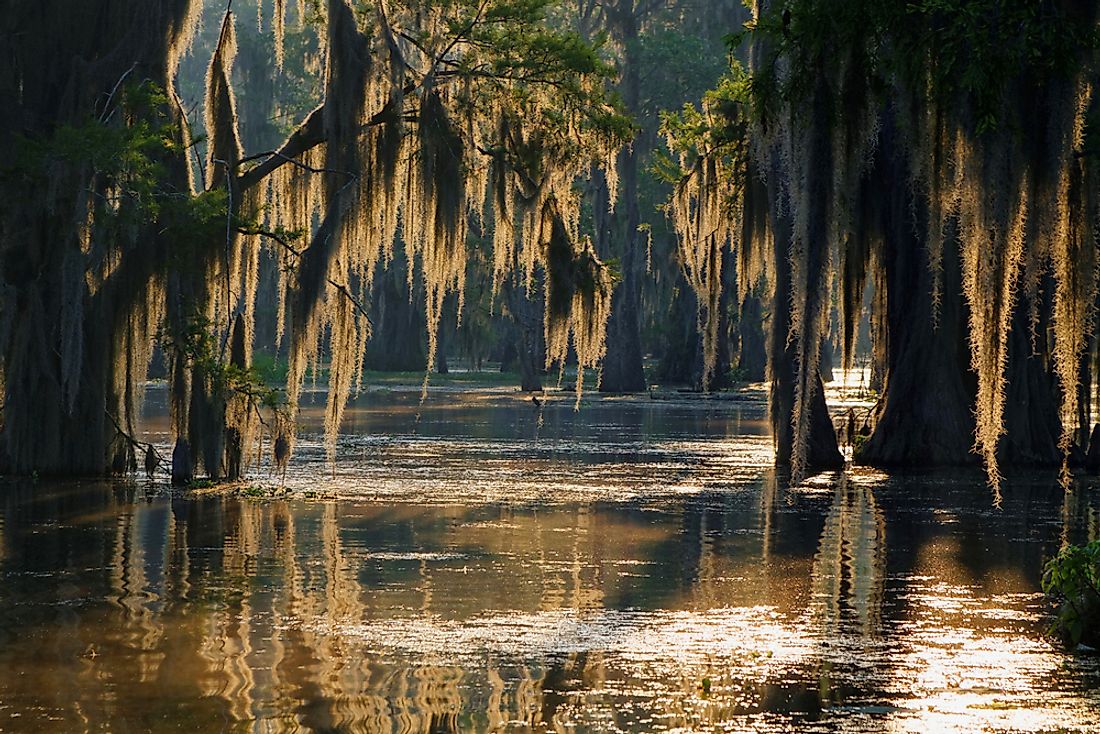What Is A Bayou?

A bayou is a wetland or marshy lake, often found in the Gulf Region of the southern United States, particularly in the Mississippi region. Bayous are slow moving and often heavily wooded. Common vegetation found in bayous include mosses, as well as leafy trees. In this article, we will delve into examples of bayous as well as examples of the unique wildlife species that are found within these types of ecosystems.
Origin
The word "bayou" comes from the Choctaw word "bayuk" which means "small stream". The Choctaw are a Native American people who originate from the modern-day southeastern United States, including territories such as Florida, Alabama, Mississippi, and Louisiana. The French influence in Louisiana lead to the word "bayou", a phrase that is still maintained today.
Before the arrival of Europeans, Native Americans used the bayous and rivers for their livelihood. The Choctaw people relied on the bayous for food such as birds, fish, and shrimp, as well as for shelter. In order to successfully navigate the thick, swampy waters, they developed sophisticated watercraft. The Akatapa people, who originate from the land around the Gulf of Mexico, were also no stranger to the bayous, and relied on them for food and transport as well. As bayous are shallow and heavily wooded, they also provided structure and at times camouflage during times of war.
Bayou Country plays host to Creole and Cajun cultures. Waterways of the Bayoun Country are credited for the Cajun and Creole’s rich cultures since they allowed the two groups interact with each other, strengthen and preserve the cultures. Bayou Country stretches from Mobile, Alabama to Houston, Texas, and covers South Florida with its capital in New Orleans, Louisiana around the Everglades.
Locations
Bayous are very commonly found within the southern United States’ Gulf Coast region, especially near the Mississippi River Delta. The world’s longest Bayou is called Bartholomew, found in the United States, covering the states of Louisiana and Arkansas. It is approximately 603 kilometers (which is 375 miles) long and holds more than 100 diverse kinds of fish. Bayou Bartholomew used to be an important transportation waterway before railway lines began being constructed in the late 19th century.
Houston, which is one of the biggest cities in the United States was established near Buffalo Bayou. To date, the bayou serves as a drainage basin for any extra water in case heavy rains are experienced in the area. The bayou is extremely instrumental in protecting the city of Houston and its population from floods.
Flora and Fauna
Some of the fauna that you can find in bayous include crawfish, shellfish, some species of shrimp, frogs, toads, catfish, American alligators, herons, spoonbills, turtles, American crocodiles, leeches, and snakes among others.
The vegetation in these areas can be anything from mosses to large cypress trees. Besides trees. Bayous also are home to many animals including wading birds, alligators, and shrimps.











